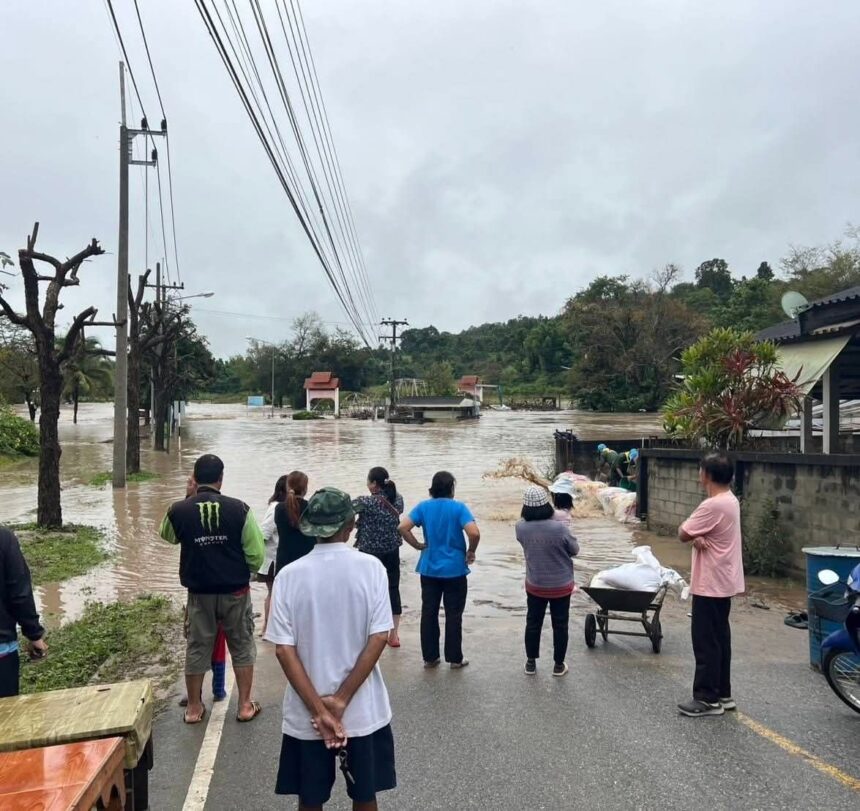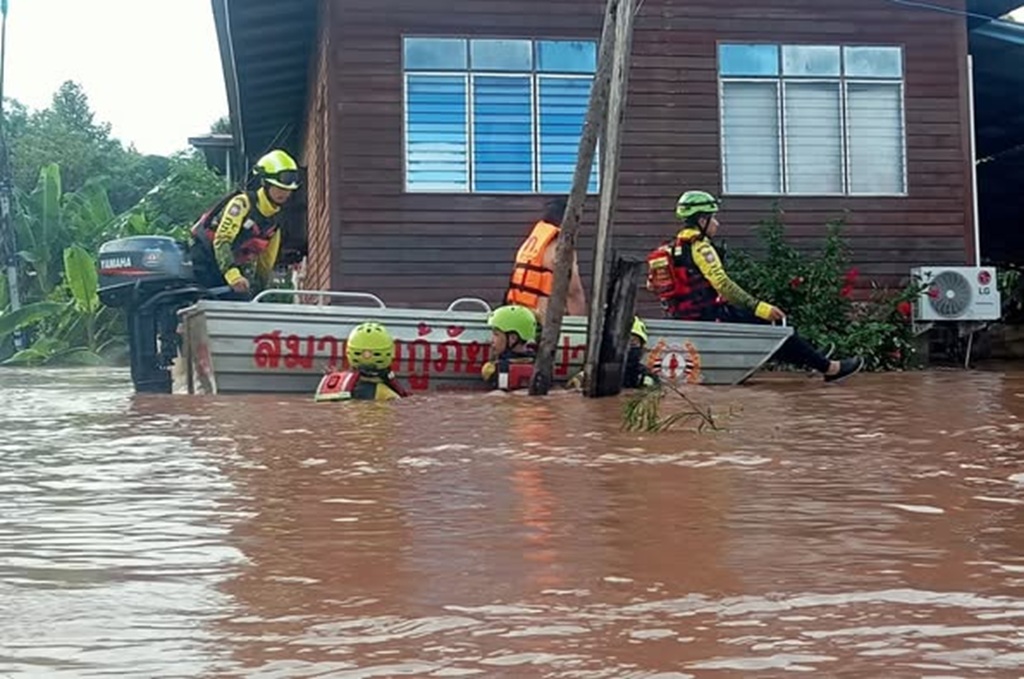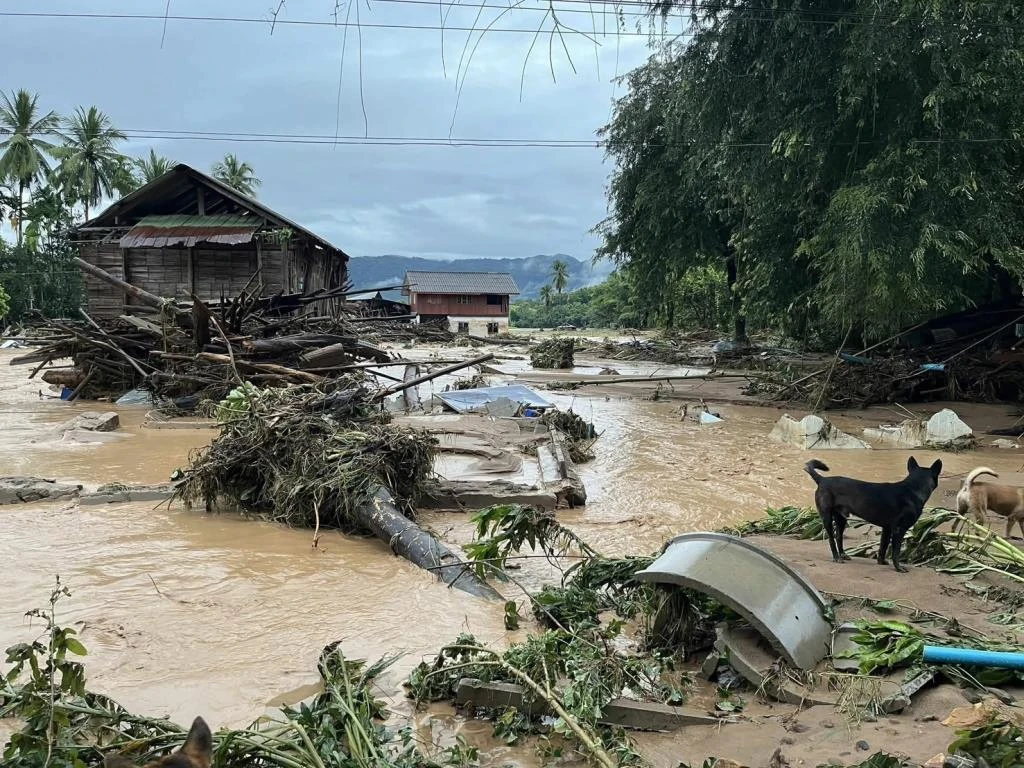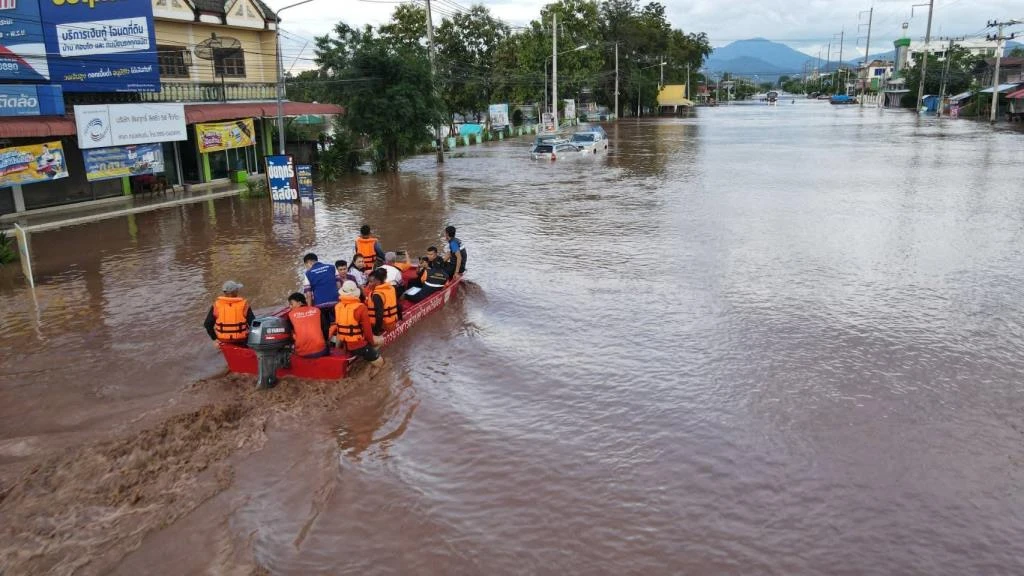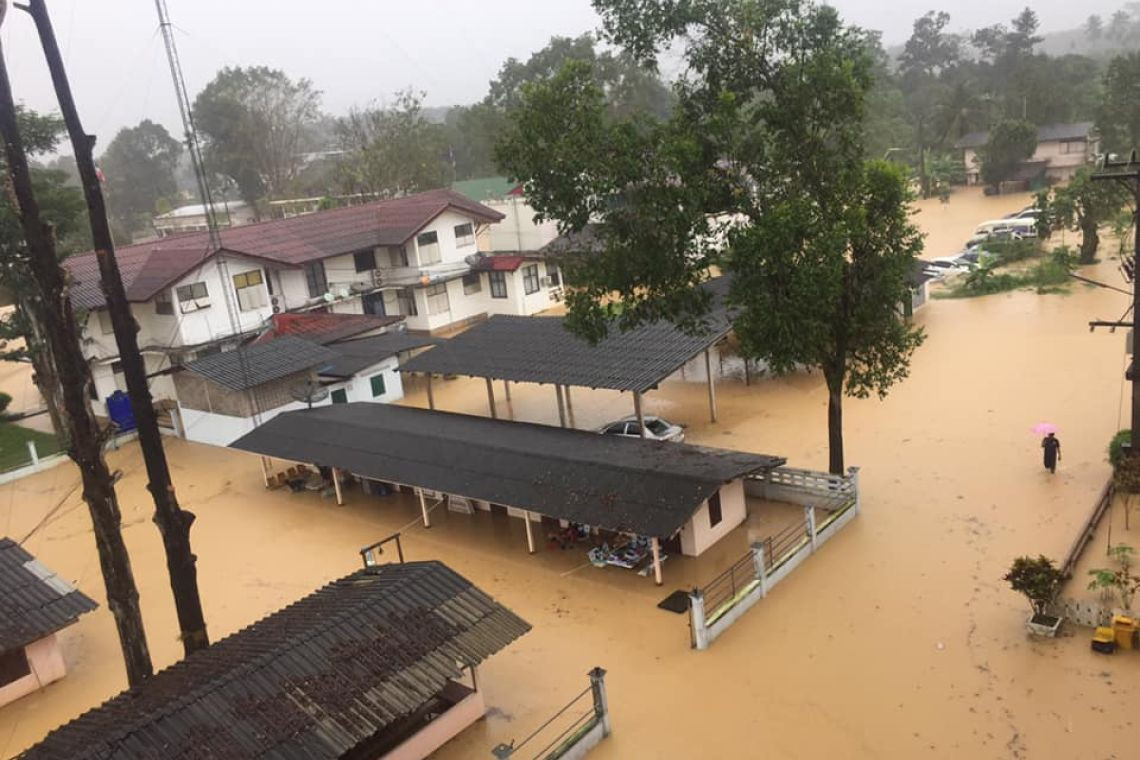CHIANG MAI – The Ping River’s brown surge pressed against doorways across this historic city on Tuesday, as northern Thailand woke to scenes of severe flooding. Tropical Storm Bualoi struck Vietnam’s central coast as a strong typhoon over the weekend.
In parts of the North, water has risen to two metres. Teams are working around the clock to get help to those trapped, and forecasters caution that late monsoon weather could keep floods high into early October.
Tropical Storm Bualoi, the 20th named storm in an unusually active 2025 Pacific typhoon season, never crossed into Thailand. Instead, its tail combined with a stronger southwest monsoon trough, dumping more than 200 millimetres of rain in 24 hours over the lower North and upper Northeast.
The Thai Meteorological Department warned as early as 26 September of heavy to very heavy rain, with a risk of flash floods, river surges, and landslides in foothill and low-lying areas. By 29 September, those warnings had come to pass.
The Department of Disaster Prevention and Mitigation reported flooding in 17 provinces, affecting 269,351 people in 82,222 households. Seven deaths have been confirmed, most linked to drowning and mudslides.
Lampang, Phitsanulok, and Phetchabun are among the worst hit in Northern Thailand. Rivers such as the Wang and Yom overtopped their banks, turning market towns into isolated pockets. In Lampang, known for elephant sanctuaries and Lanna-era temples, fast-moving water inundated the low ground on Monday, and more than 5,000 people were moved to safety.
A 62-year-old farmer, Somchai Boonmee, said the water rushed down from the hills like a wall. He said his family had lost their crop and their house, and said this felt worse than 2011. Drone footage showed vast fields underwater, with an estimated 10,000 hectares of rice and maize lost in Lampang alone.
Further south in Phitsanulok, the Nan River flooded roads and shut down travel. Parts of Highway 12 went under, leaving hundreds of drivers stuck overnight. Officials said 15 villages in Mueang district were completely cut off, and boats were ferrying food and supplies.
Phetchabun, at the base of the Phetchabun Mountains, faced flash floods from upstream runoff and a high risk of landslides. Two people died when a slope collapsed near Lom Sak. Governor Naree Tantasathien said the ground was saturated and unstable, and urged people in danger zones to move to higher ground at once.
The disaster has spread beyond the far North. In Phichit and Nakhon Sawan, the confluence of the Yom and Nan rivers created a vast inland lake, flooding town centres and industrial areas.
In Nakhon Sawan’s Pak Nam Pho district, water rose to 1.5 metres, damaging storage sites and spoiling perishable goods worth millions of baht. In Uthai Thani, the Sakae Krang River overflowed, leading to power cuts and tainted water supplies. DDPM placed total losses at more than 2 billion baht (about 60 million dollars), covering dead livestock, damaged infrastructure, and response costs.
Relief work is underway, led by the DDPM’s National Disaster Warning Centre. Cell Broadcast alerts went out on 27 September. More than 500 teams moved in from hubs in Chiang Mai and Khon Kaen, bringing high-capacity pumps, mobile kitchens, and water treatment units.
DDPM spokesperson Ekkarin Thiparat said resources were being pushed forward as fast as possible. He oversaw the delivery of 50,000 family kits with rice, canned food, basic medicines, and hygiene items.
In Lampang, Royal Thai Armed Forces helicopters flew supplies to remote communities. The Royal Irrigation Department increased releases from major dams, including Sirikit and Bhumibol, to reduce downstream risk.
Volunteers, the Thai Red Cross, and temple networks have been key on the ground. In Phitsanulok, monks turned prayer halls into temporary shelters for 2,000 evacuees, providing hot meals and comfort during the crisis.
Abbot Phra Maha Somkiat said the area had faced floods before, but this year felt unrelenting. The United Nations Office for the Coordination of Humanitarian Affairs announced a 5 million dollar appeal on Monday to support recovery, pointing to impacts across Southeast Asia.
Stories from those hit by the floods show both pain and grit. In Phetchabun’s Lom Kao district, single mother Jiraporn Laothong waded through chest-high water to carry her two children to safety when their stilt house began to tilt. She said the rain felt endless, and clutched a soaked teddy bear she had saved.
Now staying in a school that has become a shelter, she waits with others for the water levels to drop. Nearby, 78-year-old Prasert Kitti, who remembers floods during the 1940s, looked over the fields that fed his family. He said nature can humble people, but families rebuild.
Forecasters warn the danger is not over. TMD expects further heavy rain through 1 October, as leftover moisture from Bualoi feeds the monsoon. TMD director-general Punnee Punsawad said rivers in the North remain very high, and any new downpour could trigger more overflow.
Climate experts point to a wider pattern. Warmer seas are feeding stronger storms, with 2025 already seeing three major typhoons in the Western Pacific: Ragasa, Neoguri, and Bualoi. Dr Suppakorn Chinvanno of Chulalongkorn University said these storms are becoming more frequent. He said Thailand needs stronger flood defences, better early warning systems, and large-scale tree planting to protect at-risk communities.




